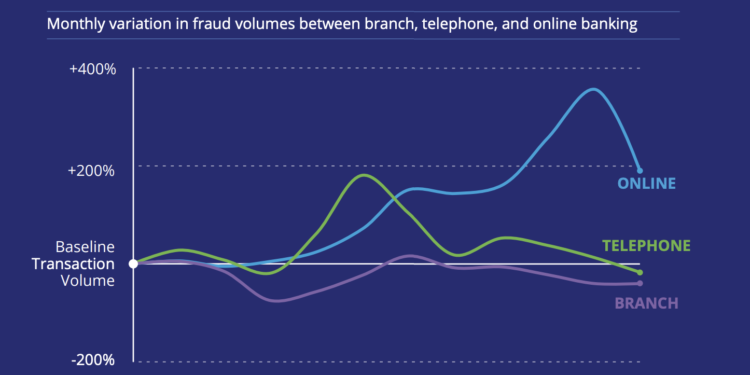
Feedzai, a cloud-based risk management platform, has announced its Financial Crime Report Q1, 2021. Feedzai’s data from financial transactions across the world shows a stark difference in consumer behaviour and financial crime in the Asia-Pacific (APAC) region as compared to Europe (EU) and North America (NA). A clear image appears – a hyper-digital world where east and west are in different recovery stages, reflecting different regional financial crime trends.
Overall, 2020 allowed fraudsters to rejoice at the rapid shift to digital banking and commerce while consumers got swindled by purchase, impersonation, money mule schemes, and account takeover scams.
650% Increase in Account Takeover (ATO) Scams in Q4
In an ATO attack, fraudsters obtain stolen credentials, account information, and passwords that belong to legitimate users. Once they access the account, they can transfer funds or buy goods with stolen credentials. Transfers occur when consumers move money from one account to another. The growing popularity of real-time payment functions, combined with the expansion of online banking, means that money moves quickly, and once it’s gone, it’s almost impossible to get back.
Feedzai’s fraud experts noticed an uptick of stolen credentials for sale on the dark web in 2020. The proliferation of stolen credentials, along with the exponential rise in online transactions, provided ideal conditions for fraudsters to blend in with legitimate consumer traffic without being detected.
250% Increase in Online Banking in Attempted Fraud on Online Banking
Online banking isn’t new, but it’s newly popular. There’s been a 200% increase in mobile banking, and fraudsters worked to blend in among them. Online banking experienced a 250% increase in attempted fraud. As expected, both telephone and branch fraud rates dropped to lower levels than they had been before the pandemic.
178% Fraud Rate Increase for Digital Media
In Q2 2020, during the height of global lockdowns, demand for books and streaming services such as music and movies increased. Demand remained strong in the APAC region, but NA and EU eventually returned to pre-pandemic baseline levels. The story around fraud is quite different, at least for NA and EU. In these regions, attempted fraud attacks increased a whopping 178% since January 2020.
48% Drop in Card Present Fraud Attacks; Volume Only Drops 20%
Card present transactions dropped by about 20% at the start of the pandemic and have consistently remained around that level. However, fraud attacks tumbled by an incredible 48%.
Card not present Transactions Drive 70% of Fraud Attacks
Fraudsters love CNP transactions, and without essential security measures such as machine learning, behavioral analytics, biometrics, and two-factor authentication (2FA), they likely will continue for some time to come.
Top 5 Transfer Fraud Schemes
Across the board, the pandemic was a boon for fraudsters and a burden for consumers. When it comes to transfers fraud, criminals were more drawn to the following five fraud schemes than to all others.
- Impersonation Scams – 23%
- Purchase Scams – 22%
- Account Takeover Scams – 22%
- Investment Scams – 6%
- Romance Scams – 3%
Top 5 Anti Money Laundering Red Flags

























